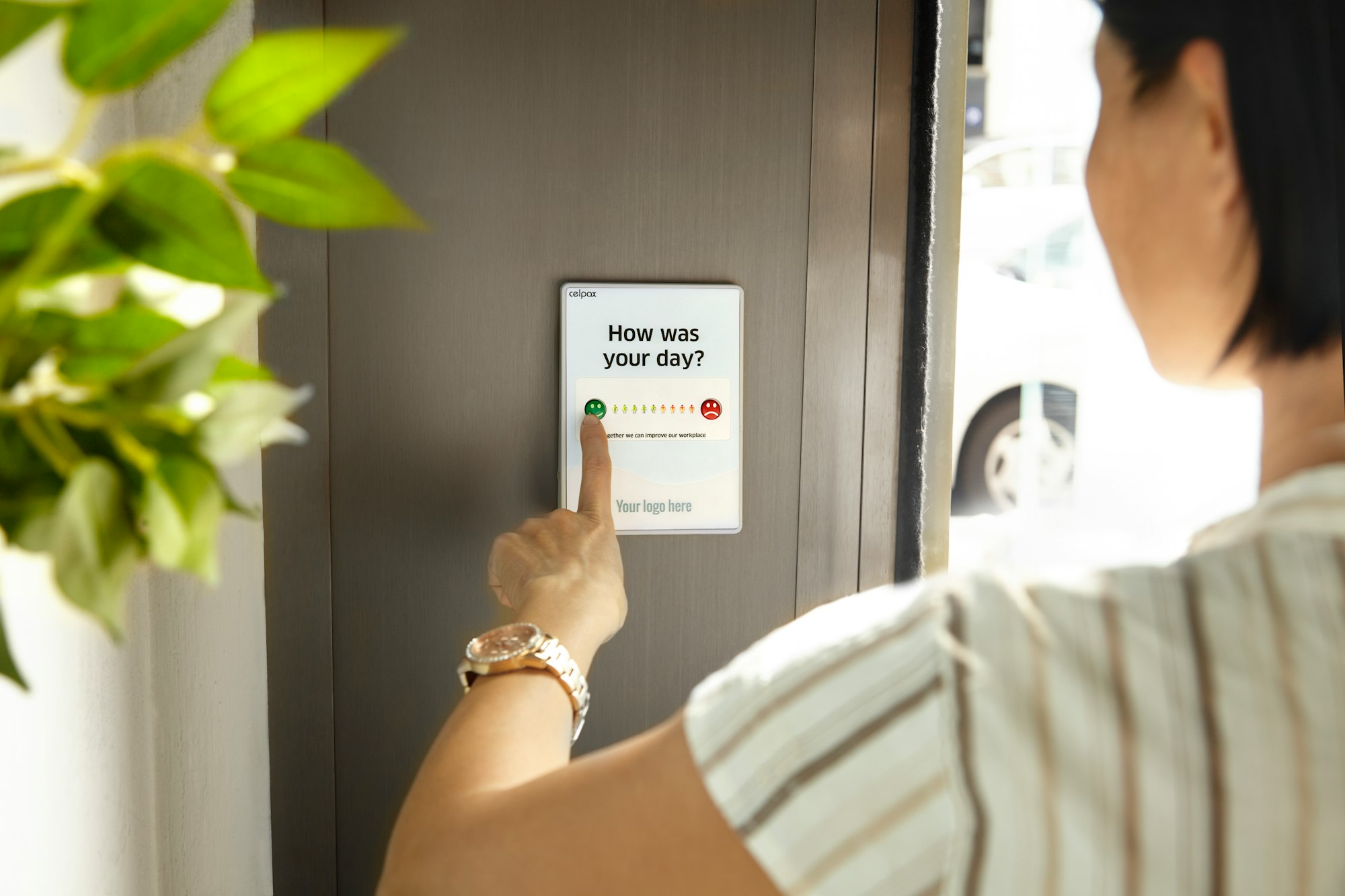The B2B sales process differs dramatically from consumer purchases. While B2C transactions often happen quickly and involve emotional decision-making, the business buying cycle operates on an entirely different timeline and logic structure. You're dealing with :
- Extended sales cycles lasting 6-18 months
- Multiple stakeholders influencing purchase decisions
- Logic-driven evaluations rather than impulse buying
- Higher-stakes decisions with significant financial implications
This multi-stage process involves five distinct phases: awareness, consideration, decision, retention, and advocacy. Each stage presents unique challenges and opportunities that require tailored strategies and content approaches.
You need to recognize that today's B2B buyers prefer self-service research options, conducting up to 70% of their journey independently before engaging with sales representatives. This shift demands a sophisticated understanding of how prospects navigate their buying process.
This article provides actionable strategies for optimizing each stage of the B2B customer journey, helping you create more effective touchpoints and drive better business outcomes through strategic journey mapping and customer-centric approaches.
Understanding the Complexity of the B2B Customer Journey
The B2B buying process presents unique challenges that set it apart from traditional consumer purchasing decisions. You're dealing with intricate organizational structures where multiple stakeholders influence every decision, creating a web of interactions that can span months or even years.
Extended Sales Cycles Define B2B Transactions
Your typical B2B sale cycle stretches between 6 to 18 months, contrasting sharply with B2C purchases that often happen within minutes or days. This extended timeline reflects the substantial financial commitments involved and the need for thorough evaluation processes. Each customer journey stage requires careful nurturing as prospects move through lengthy approval chains and budget allocation procedures.
Multiple Decision-Makers Shape Purchase Outcomes
B2B organizations rarely operate with single decision-makers. You'll encounter buying committees that include :
- Technical evaluators who assess product specifications
- Financial gatekeepers who control budget approvals
- End users who will interact with your solution daily
- Executive sponsors who provide final authorization
Each stakeholder brings different priorities, concerns, and evaluation criteria to the table, making B2B buyer behavior significantly more complex than individual consumer choices.
Logic Drives B2B Purchase Decisions
While B2C customers often make emotional purchases they later justify with logic, B2B buyers follow the opposite pattern. Your prospects demand concrete evidence of ROI, detailed feature comparisons, and comprehensive risk assessments. They scrutinize vendor stability, implementation timelines, and long-term support capabilities before committing to partnerships.
This analytical approach means you must provide substantial documentation, case studies, and proof points throughout the journey. B2B buyers expect data-driven justifications they can present to their internal teams, creating additional layers of complexity in your sales and marketing efforts.
The interconnected nature of these factors creates a sophisticated ecosystem where traditional linear sales funnels prove inadequate for capturing the true complexity of modern B2B purchasing decisions.
The Five Stages of the B2B Customer Journey
The b2b customer journey unfolds across five distinct stages, each requiring specific strategies and content approaches to guide prospects toward becoming loyal advocates. Understanding these stages allows you to create targeted experiences that resonate with your audience's evolving needs and decision-making processes.
1. Awareness Stage: Attracting Attention and Generating Leads
The awareness stage marks the beginning of your prospect's journey, where potential customers first recognize they have a business challenge or opportunity that requires attention. During this critical phase, prospects often experience symptoms of underlying problems without fully understanding the root causes or available solutions.
How Prospects Identify Challenges
Your prospects typically discover their needs through several scenarios :
- Performance gaps become apparent through declining metrics or missed targets
- Industry changes create new compliance requirements or competitive pressures
- Internal stakeholders raise concerns about inefficiencies or outdated processes
- Peer discussions at industry events highlight emerging best practices
- Executive mandates drive the search for improvement opportunities

Strategic Channels for Brand Awareness
Effective lead generation strategies for B2B awareness stage leverage multiple touchpoints where your prospects naturally seek information :
- Search Engines : Your prospects actively search for solutions using specific keywords related to their challenges. Optimizing your content for these search terms ensures visibility when they need answers most.
- Social Media Platforms : LinkedIn, Twitter, and industry-specific communities serve as valuable spaces for sharing insights and engaging with potential customers. These platforms allow you to demonstrate thought leadership while building relationships.
- Industry Events : Conferences, trade shows, and webinars provide face-to-face opportunities to connect with prospects who are actively exploring solutions. These venues offer credibility and immediate feedback opportunities.
- Referral Networks : Existing customers, partners, and industry connections often provide the most qualified leads through word-of-mouth recommendations and introductions.
Content Types That Drive Engagement
Your awareness stage content should educate rather than sell, focusing on helping prospects understand their challenges :
- Educational Blog Posts : Address common industry pain points and provide actionable insights that demonstrate your expertise
- Video Content : Explainer videos and thought leadership interviews capture attention while delivering complex information in digestible formats
- Podcasts : Long-form audio discussions featuring industry experts offer in-depth conversations on relevant topics
2. Consideration Stage: Nurturing Prospects with Valuable Insights
The consideration stage marks a critical shift in the b2b customer journey where prospects move beyond problem identification into active solution evaluation. During this phase, buyers dive deep into research mode, systematically comparing vendors, analyzing features, and weighing the pros and cons of different approaches to address their identified challenges.
Your prospects are no longer casual browsers—they're serious evaluators with specific criteria in mind. They're downloading whitepapers, attending webinars, requesting product demonstrations, and scrutinizing case studies from companies similar to theirs. The buyer evaluation tactics for B2B consideration stage become increasingly sophisticated as decision-makers build comprehensive vendor shortlists.
Why Educational Content Matters
Educational content becomes your most powerful weapon during this stage. Prospects crave detailed information that helps them make informed decisions :
- Webinars that demonstrate thought leadership and provide actionable insights
- Customer testimonials from similar industries or company sizes
- Comparison guides that position your solution against competitors
- ROI calculators that quantify potential business impact
- Implementation case studies showing real-world success stories
Addressing Specific Solution Requirements
The consideration stage differs dramatically from the awareness stage in terms of content depth and buyer intent. While awareness content focuses on problem education, consideration content must address specific solution requirements. Your prospects are asking detailed questions :
- "How does this integrate with our existing systems?"
- "What's the implementation timeline?"
- "How do other companies in our industry use this solution?"
You need to anticipate these questions and provide comprehensive answers through multiple content formats. Video testimonials carry particular weight during this stage because they add human credibility to your claims. When prospects hear directly from peers who've successfully implemented your solution, trust builds naturally.
The key to nurturing prospects effectively lies in understanding their evaluation process and providing the right information at precisely the right moment in their research journey.
3. Decision Stage: Facilitating Conversions through Trust-Building Strategies
The decision stage is the final step in your prospect's research journey. At this point, they have narrowed down their options and are ready to make a choice. This is a crucial moment for buyers as they need solid evidence that your product or service can deliver on its promises. Your role now shifts from being an educator to a trusted advisor, providing the final pieces of proof that will sway their decision in your favor.
Consultations and Product Demos: Powerful Conversion Tools
During this phase, consultations and product demos become your most effective tools for converting prospects into customers. Unlike the earlier stages where prospects passively consume content, the decision stage requires interactive experiences.
- Schedule one-on-one consultations that address specific pain points your prospect has identified. These sessions give you the opportunity to tailor your pitch, showcase a deep understanding of their challenges, and present your solution as the ideal fit.
- Product demos take this personalization even further by demonstrating rather than just explaining. You can guide prospects through real-life situations they will face, highlighting features that directly solve their problems. The key here is to make these demonstrations feel like collaborative problem-solving sessions instead of traditional sales presentations.
Detailed Case Studies: Providing Social Proof
Logic-driven B2B buyers often seek validation through detailed case studies. These documents should go beyond surface-level success stories and include :
- Specific metrics and ROI calculations
- Implementation timelines and processes
- Challenges encountered and how they were overcome
- Long-term results and ongoing benefits
When choosing case studies for prospects in the decision stage, select examples from similar industries or companies facing comparable challenges. This relevance builds confidence that your solution will work in their unique context.
Purchase Decision Optimization Techniques: Reducing Perceived Risk
The decision stage also benefits from various techniques aimed at optimizing purchase decisions for B2B buyers such as :
- Offering risk-free trials
- Implementing phased plans
- Providing flexible contract terms
These approaches help reduce perceived risks associated with making a purchase while also demonstrating your commitment to their success beyond just the initial sale.

4. Retention/Loyalty Stage: Ensuring Long-Term Success with Effective Onboarding and Support
The retention stage is where your investment in the B2B customer journey truly pays off. You've successfully guided prospects through the awareness stage, consideration stage, and decision stage - now you must turn new customers into loyal advocates who drive long-term revenue growth.
Customer Onboarding Best Practices for B2B Retention Stage
Customer onboarding best practices for B2B retention stage start with organized implementation processes that remove confusion and speed up the time it takes for customers to see value. You need dedicated onboarding specialists who understand your product's technical requirements and can guide customers through initial setup phases. Create detailed onboarding checklists that break complex implementations into manageable steps, ensuring nothing falls through the cracks during those critical first 90 days.
Your onboarding process should include :
- Kickoff meetings with key stakeholders to align expectations
- Training sessions tailored to different user roles within the client organization
- Progress milestones with clear success metrics and timelines
- Regular check-ins to address concerns before they become problems
Reliable Ongoing Support
Reliable ongoing support is essential for keeping customers in the B2B customer journey. You must offer multiple support channels - phone, email, chat, and self-service portals - that accommodate different communication preferences. Response time commitments matter significantly; B2B customers expect faster resolution than typical consumer support models.
Flexible Payment Options
Flexible payment options show that you're committed to long-term partnerships instead of just one-time transactions. Here are some payment options you can consider :
- Customized payment schedules aligned with client cash flow cycles
- Volume discounts for multi-year commitments
- Usage-based pricing models that scale with customer growth
- Early payment incentives that benefit both parties
Proactive Relationship Management
Your efforts to retain customers should focus on actively managing relationships. Regular business reviews help identify opportunities for expansion while also addressing potential risks of churn. Customer success teams equipped with usage analytics can spot declining engagement patterns and intervene with targeted support before customers start looking for alternatives.
5. Advocacy Stage: Turning Satisfied Customers into Brand Evangelists
The advocacy stage represents the pinnacle of the B2B customer journey, where satisfied clients transform into powerful brand evangelists who actively promote your business. Unlike the previous stages focused on acquisition and retention, this phase leverages existing relationships to fuel organic growth through authentic customer testimonials and referrals.
Customer advocacy cultivation strategies for B2B advocacy stage require a systematic approach to identifying and nurturing your most satisfied clients. You need to recognize that not every customer will become an advocate – focus on those who have achieved measurable success with your solution and demonstrate genuine enthusiasm for your brand.
Building Your Advocacy Foundation
Start by implementing structured feedback collection systems that capture success stories and positive outcomes. Create dedicated channels for customers to share their experiences :
- Industry forum participation where clients can naturally discuss your solutions
- Social media amplification programs that encourage organic sharing
- Peer-to-peer networking events hosted by your company
- Customer advisory boards that give advocates a voice in product development
Encouraging Authentic Testimonials
The most effective B2B customer journey advocacy emerges when you make it easy for satisfied customers to share their experiences. Develop template frameworks that help clients articulate their success stories while maintaining authenticity. Provide them with data points, ROI calculations, and specific metrics that demonstrate the value they've received.
Consider creating co-marketing opportunities where both your brand and the customer benefit from shared visibility. Joint case studies, speaking opportunities at industry events, and collaborative content creation strengthen the relationship while expanding your reach through their networks.
The advocacy stage creates a self-reinforcing cycle where satisfied customers attract similar prospects who are more likely to progress smoothly through the awareness stage, consideration stage, decision stage, and retention stage based on peer recommendations rather than traditional marketing efforts.
Mapping Touchpoints Along the B2B Customer Journey for Better Insights
Customer journey mapping in B2B context transforms abstract buyer behaviors into concrete visual representations you can analyze and optimize. This strategic approach captures every interaction your prospects have with your brand across multiple channels and stages.
The Visual Advantage of Journey Mapping
Creating visual maps of customer interactions reveals patterns that spreadsheets and reports often hide. You can track how prospects move from initial website visits to email engagements, phone consultations, and social media interactions. These visual representations help you understand the complete picture of buyer behavior rather than isolated touchpoint data.
Modern B2B buyers interact with your brand through numerous channels :
- Digital touchpoints : Website visits, content downloads, email opens, social media engagement
- Direct interactions : Sales calls, demo requests, consultation bookings
- Third-party channels : Review sites, industry forums, partner referrals
Identifying Critical Pain Points and Opportunities
Journey mapping exposes friction points that derail potential customers. You might discover that prospects frequently abandon the process after requesting pricing information, indicating a need for clearer value communication. Alternatively, you could identify that customers who attend webinars convert at higher rates, suggesting an opportunity to promote these events more aggressively.
Key areas to examine include :
- Response times between touchpoints
- Content gaps that leave questions unanswered
- Technical barriers preventing smooth progression
- Misaligned messaging across different channels
Journey mapping also reveals unexpected conversion paths. Some prospects might skip traditional stages or engage through unconventional channels, providing insights for optimizing your marketing and sales strategies. You can use tools like heat mapping software, CRM analytics, and customer feedback surveys to gather the data needed for comprehensive journey visualization.
Mapping Touchpoints Along the B2B Customer Journey for Better Insights
Visual mapping of your B2B customer journey transforms abstract buyer behavior into actionable intelligence. You need to document every interaction point where prospects and customers engage with your brand across multiple channels and platforms.
Start by cataloging all touchpoints systematically:
- Digital interactions : Website visits, email opens, social media engagement, content downloads
- Direct communications : Phone calls, video conferences, in-person meetings
- Third-party channels : Partner referrals, industry events, review platforms
- Support touchpoints : Help desk tickets, onboarding sessions, training calls
Tracking tools like HubSpot, Salesforce, or Google Analytics provide the data foundation you need. Heat mapping software such as Hotjar reveals how visitors navigate your website, while CRM systems capture communication history and engagement patterns.
The real value emerges when you identify friction points and optimization opportunities. Look for stages where prospects consistently drop off or where the sales cycle stalls unexpectedly. These pain points often signal misaligned content, unclear messaging, or process bottlenecks.
"Companies that map their customer journey see 54% greater return on marketing investment compared to those that don't." - Aberdeen Group
Create visual journey maps using tools like Miro or Lucidchart to share insights across teams. Include emotional states, questions prospects typically have, and the content or support they need at each stage.
Your buyer personas development in B2B marketing strategy becomes more precise when backed by touchpoint data. You can see which personas engage most frequently at specific touchpoints and tailor your approach accordingly. This data-driven mapping approach helps you allocate resources more effectively and create seamless experiences that guide prospects toward purchase decisions.
FAQs (Frequently Asked Questions)
What is the B2B customer journey and why is it important ?
The B2B customer journey refers to the multi-stage process businesses undergo when making purchasing decisions. It is important because understanding this journey helps companies tailor their marketing and sales strategies effectively, addressing the unique complexities of B2B buying behavior compared to B2C.
How does the B2B customer journey differ from B2C journeys ?
Unlike B2C journeys, the B2B customer journey is more complex and multi-layered, involving longer sales cycles, multiple decision-makers, and a logic-driven purchase process rather than emotional factors. This requires different strategies at each stage to meet business buyers' needs.
What are the five stages of the B2B customer journey ?
The five stages are Awareness (attracting attention and generating leads), Consideration (nurturing prospects with valuable insights), Decision (facilitating conversions through trust-building), Retention/Loyalty (ensuring long-term success with onboarding and support), and Advocacy (turning satisfied customers into brand evangelists).
How can businesses optimize lead generation during the Awareness Stage in B2B marketing ?
Businesses can attract attention by identifying prospects' challenges or needs through channels like search engines, social media, and events. Using engaging content such as blogs, videos, and podcasts helps drive traffic and generate quality leads effectively.
What strategies support buyers during the Consideration Stage of the B2B customer journey ?
During consideration, buyers research and compare options in-depth. Providing educational content such as webinars, testimonials, and detailed case studies helps nurture prospects by offering valuable insights that support informed decision-making.
Why is mapping touchpoints important in the B2B customer journey ?
Mapping touchpoints visually across channels like website visits, emails, and calls provides better insights into customer interactions throughout the journey. This helps identify pain points and opportunities for improvement at each stage, enabling businesses to enhance overall buyer experience.










